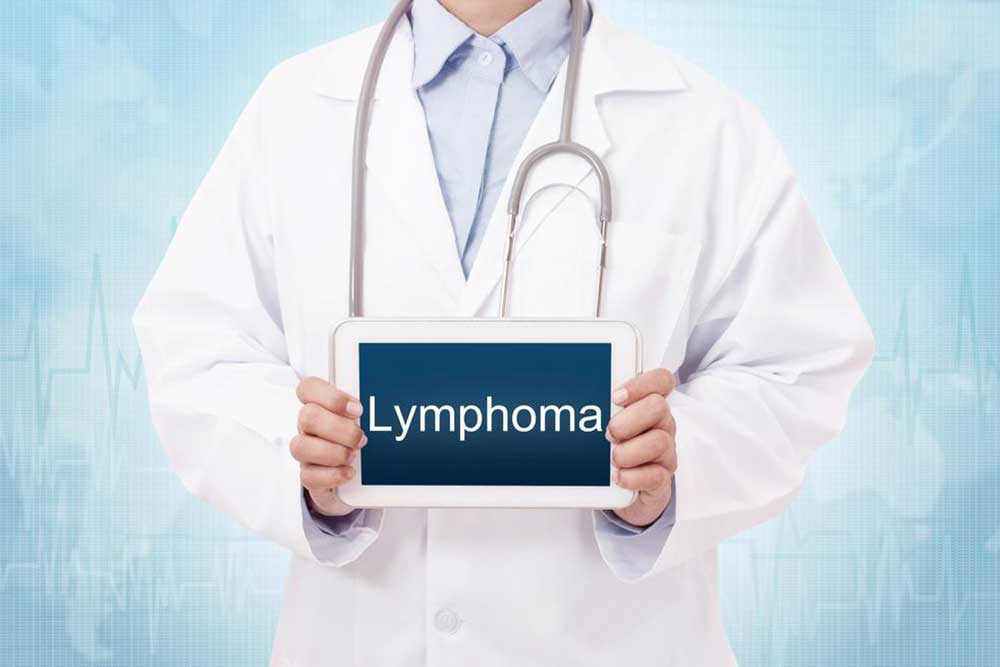Different Types of Lymphoma You Should Know about
A type of cancer, lymphoma affects the white blood cell known as lymphocytes in the lymphatic system. These cells are the body’s defense mechanism against diseases and infections. Lymphoma causes lymphocytes to reproduce at a faster rate. It can develop in different parts of the body starting in the lymph nodes.
There are two categories of lymphomas, namely, Hodgkin’s lymphoma and non-Hodgkin’s lymphoma. Hodgkin’s lymphoma is one of the rarest types of cancer. It is usually characterized by the presence of Reed–Sternberg (RS) cells. Non-Hodgkin’s lymphoma is more common than Hodgkin’s lymphoma.
Non-Hodgkin’s lymphoma
1. B-cell lymphoma
The B-cell lymphoma is one of the most aggressive forms of Non-Hodgkin’s lymphoma. Diffuse large B-cell lymphoma (DLBCL) is a fast-growing lymphoma. It develops from abnormal B-cells present in the blood and damages the structure of the lymph node. Early diagnosis and resultant treatment can lead to a complete cure. The symptoms of this type of lymphoma include enlarged lymph nodes, night sweats, unusual weight loss, loss of appetite, extreme tiredness or fatigue, fever, and extreme itchiness. Moreover, there can be abdominal pain, diarrhea, bloody stools, cough, and shortness of breath.
2. T-cell lymphoma
The T-cell lymphoma is quite uncommon. About 15 percent of Non-Hodgkin’s lymphoma cases are T-cell lymphoma. There are multiple types of T-cell lymphoma. The most common one is cutaneous T-cell lymphoma. It affects the skin, internal organs, lymph nodes, and blood. Symptoms include patches of flat scaly skin, thick raised plaques, itching, and tumors that may develop into ulcers. There can be recurrent infections, susceptibility to bruises and bleeding, fatigue, fever, chills, constipation, abdominal fullness, and frequent urination.
3. Burkitt’s lymphoma
The Burkitt’s lymphoma is a very rare type of lymphoma. It is quite aggressive and has been known to affect people who have weak immune systems. The exact cause of this type of lymphoma is not known. However, it has been commonly observed in children living in regions with high incidences of malaria. Another risk factor of this disease is HIV. Burkitt’s lymphoma can bring about night sweats, fever, and weight loss. Other symptoms include distortion of facial bones, abdominal swelling, intestinal obstruction, enlarged thyroid, and enlarged tonsils. Moreover, there can be a rapid growth of the lymph nodes.
4. Mantle cell lymphoma
The mantle cell lymphoma is a very rare and aggressive type of lymphoma. Only about 6 percent of lymphoma cases are of mantle cell lymphoma. It affects the bone marrow and the gastrointestinal tract. This type of lymphoma is usually diagnosed at a later stage.
5. Follicular lymphoma
Nearly one in five lymphoma cases have been detected as follicular lymphoma. More commonly observed in older adults, the average age of diagnosis of follicular lymphoma is 60 years. This type of lymphoma begins in the white blood cells and progresses very slowly. The disease causes symptoms such as enlarged lymph nodes in the underarms, groin, belly, and neck. Other symptoms include shortness of breath, fatigue, night sweats, fevers, weight loss, and recurrent infections.
6. Small lymphocytic lymphoma
Similar to follicular lymphoma, small lymphocytic lymphoma also grows slowly. The cancer cells develop in the lymph nodes.
7. Lymphoplasmacytic lymphoma
The lymphoplasmacytic lymphoma is a rare type of lymphoma that has been diagnosed in nearly 1 to 2 percent cases of lymphoma. It has been mostly observed in older individuals. This type of lymphoma is caused by abnormal production of antibodies. It also leads to anemia and a person becomes prone to multiple infections.
Hodgkin’s lymphoma
1. Lymphocyte-depleted Hodgkin’s disease
This type of Hodgkin’s lymphoma is rare, and yet aggressive. About 1 percent of lymphoma cases are lymphocyte-depleted Hodgkin’s disease. This type of lymphoma has been mostly diagnosed in persons who are in their 30s. People who have a weak immune system or have an infection such as HIV are more susceptible to this disease. People with this disease have normal lymphocytes with a lot of RS cells. This is what doctors observe in diagnostic tests.
2. Lymphocyte-rich Hodgkin’s disease
This type comprises nearly 5 percent of all lymphoma cases. Lymphocyte-rich Hodgkin’s disease is more common in men than in women. In diagnostic tests, the presence of lymphocytes as well as RS cells is observed. This helps in early diagnosis of the disease.
3. Nodular lymphocyte-predominant Hodgkin’s disease
In diagnostic tests, this type of lymphoma does not show any RS cells. It is observed mostly in males between 30 years and 50 years. This is a non-aggressive type of Hodgkin’s disease. Around 5 percent of lymphoma cases are nodular lymphocyte-predominant Hodgkin’s disease.
4. Mixed cellularity Hodgkin’s lymphoma
This is similar to lymphocyte-rich Hodgkin’s disease. In diagnostic tests, doctors can observe RS cells as well as lymphocytes. It is more prevalent in older men. This type of lymphoma is more common compared to other types as nearly a quarter cases are of mixed cellularity type.
5. Nodular sclerosis Hodgkin’s lymphoma
This is a very common type of lymphoma. Nearly 70 percent of lymphoma cases are nodular sclerosis Hodgkin’s lymphoma. It is mostly observed among young adults. This type of lymphoma develops in the lymph nodes that have sclerosis or scar tissues. Compared to other types of lymphoma, this one can be treated successfully and is completely curable.



